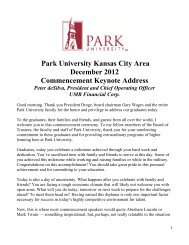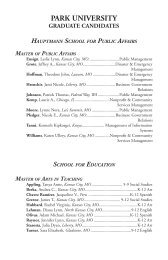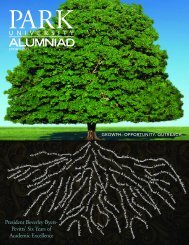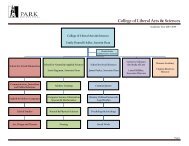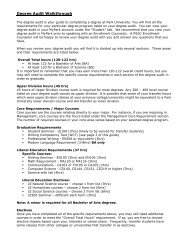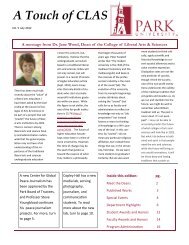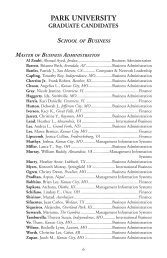How to Write a Radio Serial Drama for Social Development- PDF
How to Write a Radio Serial Drama for Social Development- PDF
How to Write a Radio Serial Drama for Social Development- PDF
You also want an ePaper? Increase the reach of your titles
YUMPU automatically turns print PDFs into web optimized ePapers that Google loves.
Chapter Six: Developing the Setting 93<br />
tempting <strong>to</strong> think that graphic details of a scene’s location are of<br />
no great importance. In fact, the opposite is true. If the audience<br />
is <strong>to</strong> believe in the serial as an expression of real life, they must<br />
be able <strong>to</strong> visualize clearly the surroundings in which the<br />
characters live and work.<br />
The writer should strive <strong>to</strong> create settings that are:<br />
1. Familiar <strong>to</strong> the audience or that can be made familiar. A<br />
rural audience, <strong>for</strong> example, generally would be more<br />
com<strong>for</strong>table with a drama set in a small village than one set<br />
in a big city business office. An unfamiliar setting, however,<br />
can be exciting and add interest <strong>to</strong> the s<strong>to</strong>ry as long as the<br />
writer provides enough details <strong>to</strong> enable the audience <strong>to</strong><br />
imagine it clearly.<br />
2. Suitable <strong>to</strong> the message. <strong>Write</strong>rs should choose locations<br />
that allow the message <strong>to</strong> be presented in a natural manner.<br />
Limiting a serial’s settings <strong>to</strong> a farm and a school, <strong>for</strong><br />
example, would not permit the drama <strong>to</strong> cover the content of a<br />
reproductive health message either appropriately or adequately. It would<br />
be essential <strong>to</strong> include a clinic or health post as one of the settings.<br />
3. Limited in number. Listeners feel more com<strong>for</strong>table if they are taken <strong>to</strong><br />
the same familiar settings on a regular basis rather than moved from one<br />
new location <strong>to</strong> another frequently. Just as in real life, listeners may enjoy<br />
visits <strong>to</strong> exotic places, but they want <strong>to</strong> return <strong>to</strong> those familiar places in<br />
which they feel most com<strong>for</strong>table.<br />
4. Standard <strong>for</strong> each plot. It is easier <strong>for</strong> listeners <strong>to</strong> recognize where a<br />
scene is taking place if each plot has an established, standard setting. The<br />
standard setting <strong>for</strong> the main plot of a rural drama, <strong>for</strong> example, might be<br />
the dining room in a family home, while one of the sub-plots is routinely<br />
set in a farm yard and another in a local garage. Any of the plots<br />
occasionally could move <strong>to</strong> a different location if the s<strong>to</strong>ry required it,<br />
but relying on the standard settings simplifies writing and makes the<br />
s<strong>to</strong>ry coherent and believable <strong>to</strong> the audience.<br />
5. Identifiable by sound. Each standard setting can have some brief sound<br />
that identifies it, so that listeners can recognize the location immediately<br />
without lengthy explanations in the dialogue or by a narra<strong>to</strong>r. The sound<br />
of utensils being moved around and the crackling of a fire might identify<br />
a dining room, <strong>for</strong> example, while the sounds of animals might identify a<br />
farm yard, and the sounds of au<strong>to</strong>mobile engines, horns, and <strong>to</strong>ols being<br />
dropped on the ground might identify a garage.<br />
The identifying sound effect can be used at the beginning of a scene<br />
<strong>to</strong> establish the setting, held under softly through the opening lines of<br />
dialogue, and then faded out. Sound effects can be made live in the<br />
studio (by dropping <strong>to</strong>ols, <strong>for</strong> example), or they can be pre-recorded<br />
(animal and au<strong>to</strong>mobile noises, <strong>for</strong> example). (More in<strong>for</strong>mation on the<br />
use of sound effects can be found in Chapter 7.)<br />
Guidelines <strong>for</strong> Creating<br />
Location Settings<br />
Location settings should be:<br />
1. Familiar <strong>to</strong> the audience,<br />
2. Suitable <strong>to</strong> the message,<br />
3. Limited in number,<br />
4. Standard <strong>for</strong> each plot,<br />
and<br />
5. Identifiable by sound.<br />
6




